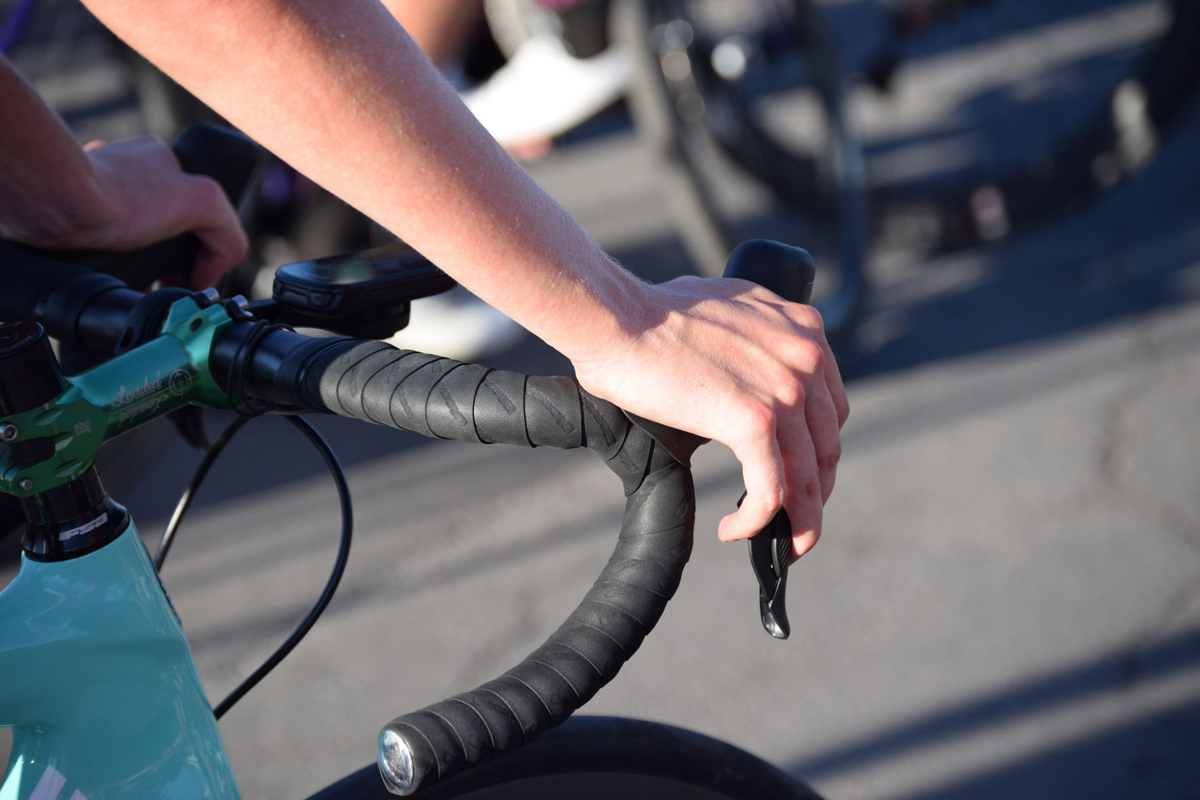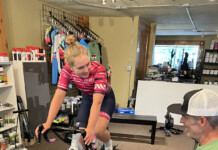So far this year the most common issue I have encountered as a bike fitter are cyclists experiencing numb hands. Many of you will have experienced occasional numbness or tingling while cycling, but for some of you this is a recurring, persistent experience that detracts from your ability to go the distance you desire or enjoy your riding as much as want to.
If you are frustrated with regularly having to change hand position, or shake out your hands to restore feeling and circulation, some insights into the contributing factors may help you find relief. Numb hands are common to both road and mountain bike riders, and a rarer condition in tri /tt riders who are in the aero position. As a fitter, sometimes I am able to resolve the issue immediately, and sometimes it takes multiple trials and tries.

Which part of your hands go numb, whether it is one or both hands, how long it takes before the onset of tingling or numbness, what of riding terrain it occurs on (pavement, dirt, uphill, downhill), and how long before the issue resolves once you are off the bike are all important clues for exploring and solving this problem. If the numbness is intermittent, takes a few hours of riding before it commences, and/or quickly resolves once you are of the bike, then this is a mild case and probably requires only a small change to be eliminated. However if you get hand numbness within an hour of riding; it occurs on every ride; and/or doesn’t resolve for a few hours or even until the next day, then you are at high risk of developing long term nerve damage (peripheral neuropathy) and there is something significantly wrong in your bike fit position, or riding technique.
Preventing hand numbness requires problem solving back up through the cause and effect chain. You experience the effect. The cause of hand numbness is nerve compression. There are 3 primary nerves servicing the hand (radial, medial and ulnar), and the area of the hand that experiences numbness is a clue as to which nerve or nerves are involved.
The cause of nerve compression is excessive and sustained pressure on the nerve. As supporting weight causes pressure, the problem is rephrased as “what is it about this cyclist’s position that is resulting in the hands bearing too much weight?”
The 3 primary reasons are:
- A handle bar too high and/or close to you. Your upper body wants to be more forward and down to stimulate core muscle and back fascia engagement to set up for generating power, but is prevented from doing so. Your hands are pushing back against the bars to counteract the forward forces of your torso. Most likely the bars are too high in relation to your saddle. Often hand numbness goes hand in hand with shoulder tension in this situation. Flip your stem down and/or move spacers from under the stem to the top. You may also need a longer stem. This will give your upper body more space to function in.
- The saddle is too far forward in relation to the bottom bracket. Without your hands on the bars to hold you up you would topple forward off the saddle. Too much of your weight is being transferred to the handlebars for support, instead of being directed through the saddle and your legs. This creates unnecessary weight and compression on your hands. You need a “lighter touch” on the bars. Move your saddle back (even 10mm can make a big difference). Can you ride with no hands without tipping forward off the saddle?
- Handlebars too far away or too low. This is the opposite of number 1, and similar to number 2 but for a different reason. Too much of your weight is being transferred from the saddle to the bars and you are having to “hold yourself up”. Often hand numbness is combined with neck tension in this situation. To transfer weight back into the saddle and legs you may need a shorter stem; stem with a steeper angle; more spacers under the stem; or a handlebar with a shorter “reach”.
In addition to these 3 primary causes, there are several smaller adjustments that can also have a big effect – for the better.
3 secondary factors:
- Saddle tilt angle. A saddle that is too “nose down” serves to transfer load to the bars as you subconsciously push back on the bars to prevent yourself from sliding forward on the saddle. This may also cause some IT band inflammation as the legs are also being called upon to snap you back into place on the saddle. Even half a degree of saddle tilt adjustment can fix this. It’s not to say your saddle should be perfectly level (this depends on you and the saddle type), but it will usually be close to level.
- Bar ergonomics. The rotation of the handlebars, the position of the hoods or grips, and the in/out rotation of hoods all affect weight distribution and pressure on the hands. A small tweak to any one of these can have a nuanced but profound effect on pressure distribution and therefore nerve compression. You should feel even pressure through your hands, not have it concentrated in one area.
- Getting gripped. If you are novice rider on pavement or trails, you may be feeling nervous on descents, and that can manifest as a death grip on the bars. You are creating pressure and nerve compression from muscle tension that is excess of that needed to control your bike. You need a grip on the bars, but not a death grip! This can also happen to habituated and experienced riders, perhaps more so on steep climbs. Cycling safely and comfortably requires many skills, and one of these skills is learning how much grip you need on the bars in different situations, and being able to relax your hands while still maintaining control.
As you can see there are many potential factors that can result in numb hands, and it can take some Sherlock-like skills to sleuth out the true culprit. Often the secondary evidence of “what else hurts” can provide a clue to the fundamental and underlying cause. In the absence of clues a trial and error approach may be needed to achieve the reasonable expectation that you can go riding without your hands going numb, and not have to shake them out for relief.
John Higgins wants to elevate your cycling experience. He operates BikeFitr – an independent bike fitting studio, and Fit Kit Systems – supplying equipment and education to bike retailers and fitters. Contact: [email protected]








